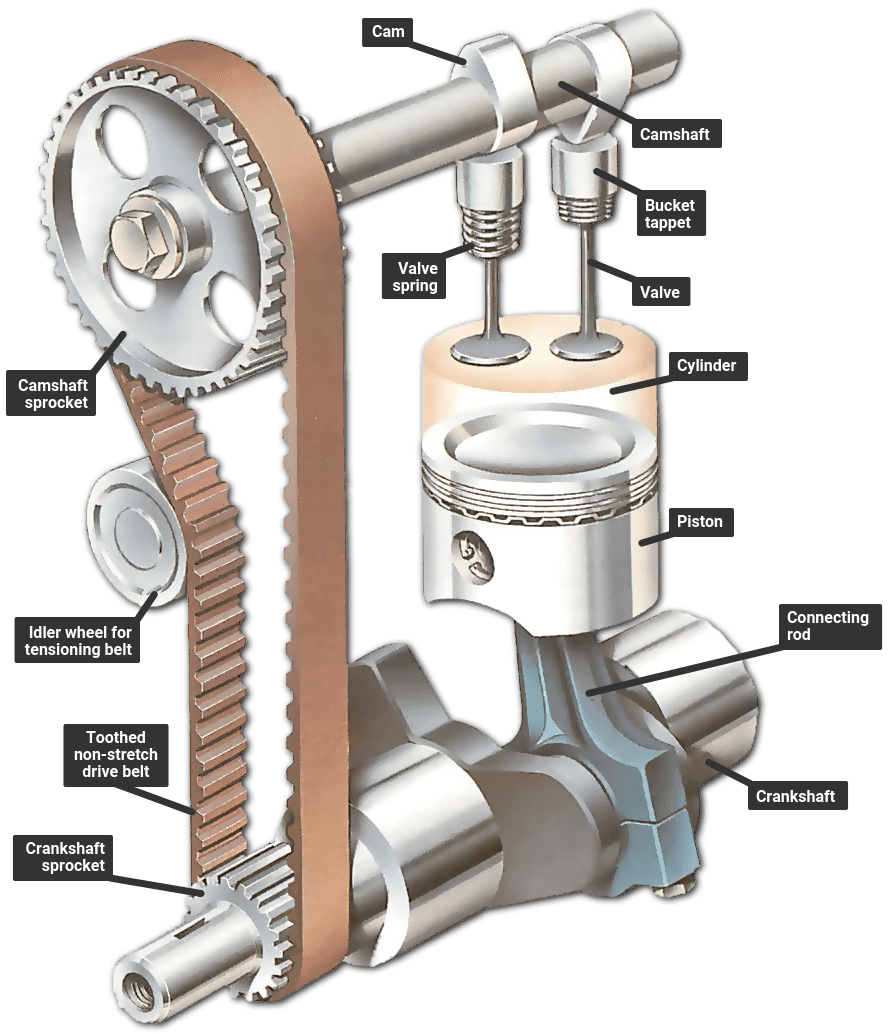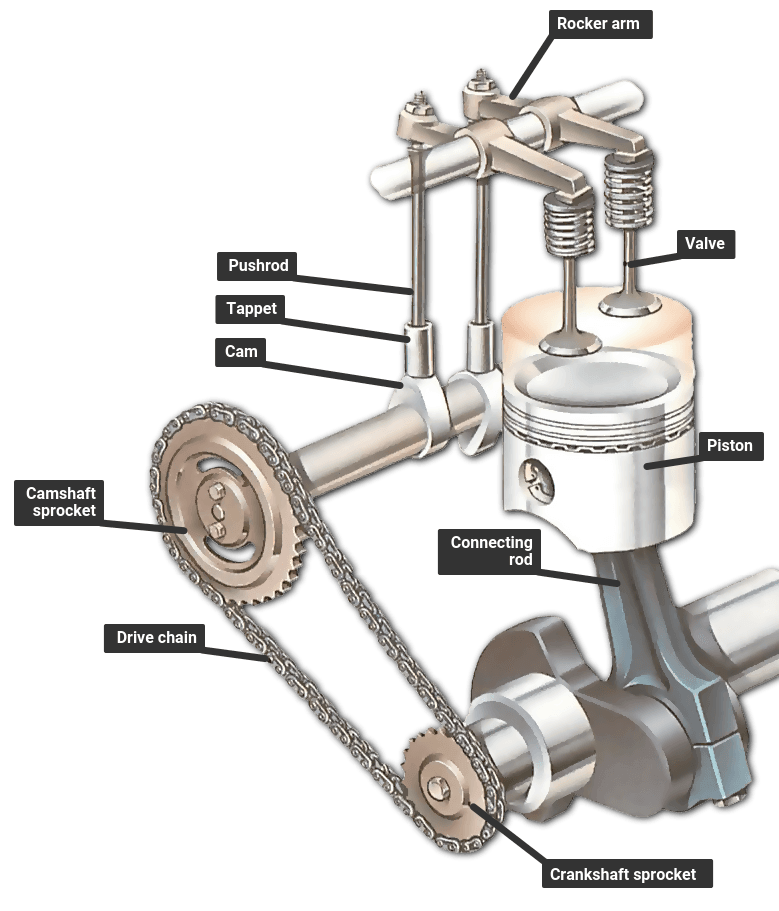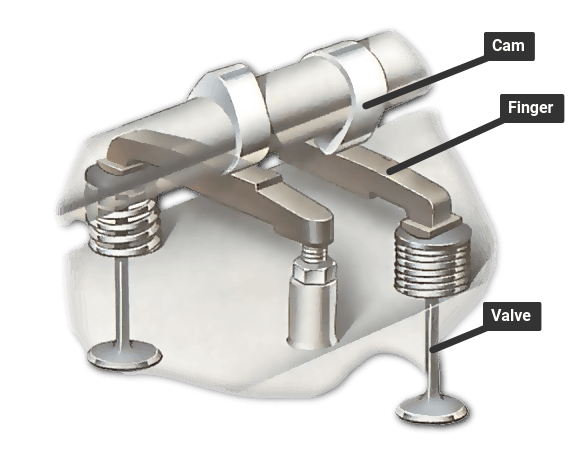The engine - how the valves open and close
The Video Course teaches you everything about modern cars.

The valve which allows mixture into the cylinder is the inlet valve; the one through which the spent gases escape is the exhaust valve. They are designed to open and close at precise moments, to allow the engine to run efficiently at all speeds.
The operation is controlled by pear-shaped lobes, called cams, on a rotating shaft, the camshaft , driven by a chain, a belt, or a set of gears from the crankshaft .
Where the camshaft is mounted in the engine block , small metal cylinders tappets sit in channels above each cam, and from the tappets metal pushrod extend up into the cylinder head . The top of each pushrod meets a rocker arm which bears against the stem of a valve, which is held in a raised (closed) position by a strong coiled spring the valve spring .
As the pushrod rises on the cam it pivots the rocker arm, which pushes the valve down (open) against the pressure of its spring. As the cam lobe rotates further, the valve spring acts to close the valve. This is called an overhead-valve (OHV) system.
Some engines have no pushrods; the valves are operated more directly by single or double camshafts in the cylinder head itself the overhead-cam system.
As there are fewer moving parts between the camshaft and the valve, the overhead-cam (OHC) method is more efficient and produces more power for a given engine capacity than an engine with pushrods, because it can operate at higher speeds. With either system, there must be some free play in the operating gear, so that the valve can still close completely when parts have expanded through heat.
A pre-set gap tappet clearance is essential between the valve stem and the rocker arm or cam, to allow for expansion. Tappet clearances vary widely on different cars, and faulty adjustment can have serious effects.
If the gap is too large, the valves open late and close early, reducing power and increasing engine noise.
Too small a clearance prevents the valves from closing properly, with a consequent loss of compression .
Some engines have self-adjusting tappets, which are hydraulically operated by the engine oil pressure.
Camshaft with pushrods

The overhead valve system (OHV) system, operated by pushrods, has the crankshaft adjacent and parallel to the crankshaft in the cylinder block.
As the crankshaft rotates, each valve is opened by means of a tappet, pushrod and rocker arm. The valve is closed by spring pressure.
The camshaft drive-chain sprocket has twice as many teeth as the crankshaft sprocket, so that the camshaft rotates at half engine speed.
Engine with overhead camshaft

An overhead-cam (OHC) engine needs fewer parts to operate the valves. The cams act directly on bucket tappets or on short levers - known as fingers - which in turn act directly on the valve stems.
The system dispenses with the extra weight and mechanical complexity of pushrods and rocker arms.
A long chain is frequently used to drive the camshaft from a sprocket on the crankshaft, but such a long chain tends to 'whip'. The problem is overcome in some designs by fitting intermediate sprockets and two shorter drive chains, kept under tension.
The Ultimate Car Mechanics video course
Learn everything about modern cars from our new video series.
Learn more >-
We build a Mazda MX5 Miata from scratch
We start by tearing down and then rebuilding the whole car.
-
Every part explained
There's ridiculous detail on every part. Clearly and easily explained.
-
All modeled in 3D
We've created the most detailed 3D model ever produced so we can show you everything working.






